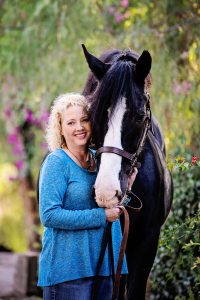March 11th, 2019

The recent alarming increase of horse deaths at the Santa Anita racetrack in Los Angeles County (Arcadia, Calif.) has caused many people to ask me what might be happening. Twenty-one horses have been euthanized due to catastrophic injuries they suffered during racing or training at Santa Anita since December 26, 2018.
Many people are looking at the track footing conditions as a possible source of the injuries. Track footing is very important for the soundness and health of the horses. It isn’t just dirt; it is a complex layer of different materials at specified depths, designed to provide comfort and safety for the horses. Poor footing – uneven, too hard, or too soft – can cause fractures or soft tissue injuries that can end race horses’ careers, and sometimes their lives.
Some speculate that the unusual amount of rainfall, and even ash falling from the recent wildfires, may have changed track conditions. The track management has suspended racing (but not training), retained industry experts to evaluate the track, hired a veterinarian to focus on equine welfare, and appears to be taking this matter very seriously. Other possibilities such as the overuse of pain medications and anti-inflammatories that mask pain, prior undiscovered injuries, and possible genetic faults are also being investigated. Upcoming necropsies (animal autopsies) may provide more information.
However there is an underlying issue here. Horse racing is extremely hard on horses’ bodies. Most regular riding horses do not begin training until they are three or four years old. Their bodies are not finished growing until then, their joints are not fully developed, and is too soon to put someone on their back. However, racing horses begin competingat two years of age (and training begins sooner than that). Some question whether these young animals should be expected to undergo such grueling competition. As a result, racing horses can suffer serious injuries. Many horses leave racing programs with injuries they will carry the rest of their lives.
Nevertheless, some leg injuries are too devastating and require the horse to be euthanized. Why are horse leg injuries so difficult to repair? The horse’s leg is actually a very delicate structure. The horse as we know it is descended from a five toed creature called Eohippus. Through evolution, the horse’s leg morphed and its four outside toes receded. The modern-day horse is walking on a hoof that is the equivalent of its middle toe. All its 1,000+ pounds are concentrated on this small digit. Pounding the ground galloping, at too young of an age, can create ruinous consequences.
Treating horses with leg injuries, especially fractures, is very complicated. Their legs are very thin compared to the rest of their bodies. They have limited amounts of soft tissue in their lower legs, so there is not a lot of “padding” to protect bones. As a result, they are more susceptible to open fractures and serious infections. The extreme power horses can generate when galloping can cause devastating, bone-shattering injuries.
Recovery from leg injuries is also highly challenging. Horses cannot rest in a hospital bed for weeks while their leg recovers. For various physiological reasons they must be able to stand and move around immediately after treatment or surgery. There are horse slings that can provide support, but even these do not always work. A good example is the sad case of Barbaro, the 2006 Kentucky Derby winner, who shattered his leg in the Preakness Stakes two weeks later. Despite world-class veterinary care, Barbaro developed a common complication of fractured legs in the hooves of his supporting limbs called “laminitis” and had to be euthanized to end his suffering.
Horses also face grave risks when coming out of anesthesia. In 1975, more than 20 million people tuned in to watch the highly anticipated match race between that year’s Kentucky Derby winner, Foolish Pleasure, and the brilliant and undefeated champion filly, Ruffian. During the race Ruffian broke two bones in her lower leg and immediately underwent emergency surgery to repair the breaks. However, she thrashed so wildly when coming out of anesthesia (a common worry for equine surgeons) that she shattered an elbow and destroyed the repairs the surgeons had made to her injured leg. She, too, had to be euthanized.
Horses, despite their size, are delicate creatures. As a lifelong equestrian and horse lover I can tell you there is nothing like the magic and partnership these magnificent animals provide. When they are used for entertainment or profit they must receive our full protection. The recent horse deaths at Santa Anita have raised concern over the use of horses in this manner. What do you think?
